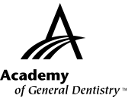|
Exercise No. 377
Subject Code: 250
Operative (Restorative) Dentistry
The 15 questions for this exercise are based on the article, Effect of prolonged air drying on the bond strength of adhesive systems to dentin, on pages 68-72. This exercise was developed by Kim Capehart, DDS, MBA, PhD(c), in association with the General Dentistry Self-Instruction committee.
|
Reading the article and successfully completing this exercise will enable you to:
- identify the characteristics of adhesive systems;
- identify the factors that contribute to high bond strength; and
- recognize the effects of prolonged air-drying time on adhesive systems.
|

